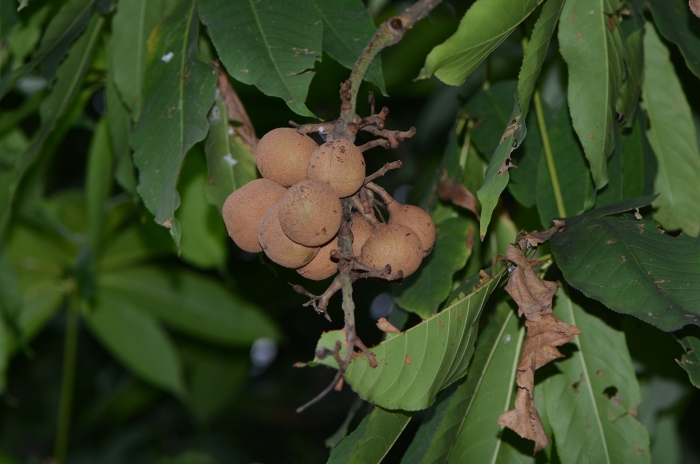Chinese Horse Chestnut
(Aesculus chinensis)
Chinese Horse Chestnut (Aesculus chinensis)
/
/

© Zinogre
CC BY-SA 4.0
Image By:
© Zinogre
Recorded By:
Copyright:
CC BY-SA 4.0
Copyright Notice:
Photo by: © Zinogre | License Type: CC BY-SA 4.0 | License URL: http://creativecommons.org/licenses/by-sa/4.0/ | Uploader: zinogre | Publisher: iNaturalist |













Estimated Native Range
Summary
Aesculus chinensis, commonly known as Chinese horse chestnut, is a deciduous tree native to mixed forests, forest margins, and river valleys in China. It has been cultivated in Britain since its introduction in 1912. This species can reach up to 82 feet in height and is characterized by its palmate leaves with 5-7 leaflets, and large, showy white panicles of flowers that bloom in May and June. The flowers are followed by round, smooth fruit capsules containing dark brown seeds, which are inedible but have been used in traditional medicine. The bark is smooth and gray, providing some winter interest.
Chinese horse chestnut is appreciated for its ornamental value, particularly its impressive floral display and its stately form. It is used in urban and residential settings, and can serve as a focal point in large gardens or parks. The tree prefers well-drained soils and can tolerate a range of soil types, though it thrives in moist, fertile conditions. It requires full sun to part shade and moderate water. While generally low-maintenance, it can be susceptible to leaf blotch and horse chestnut scale. The seeds contain triterpenoid saponins and flavonoids, which have been researched for their potential medicinal properties.CC BY-SA 4.0
Chinese horse chestnut is appreciated for its ornamental value, particularly its impressive floral display and its stately form. It is used in urban and residential settings, and can serve as a focal point in large gardens or parks. The tree prefers well-drained soils and can tolerate a range of soil types, though it thrives in moist, fertile conditions. It requires full sun to part shade and moderate water. While generally low-maintenance, it can be susceptible to leaf blotch and horse chestnut scale. The seeds contain triterpenoid saponins and flavonoids, which have been researched for their potential medicinal properties.CC BY-SA 4.0
Plant Description
- Plant Type: Tree
- Height: 20-50 feet
- Width: 15-25 feet
- Growth Rate: Moderate
- Flower Color: Yellow, Green
- Flowering Season: Spring
- Leaf Retention: Deciduous
Growth Requirements
- Sun: Full Sun, Part Shade
- Water: Medium
- Drainage: Medium
Common Uses
Bird Garden, Border Plant, Low Maintenance, Showy Flowers
Natural Habitat
Native to mixed forests, forest margins, and river valleys in China
Other Names
Common Names: Chinese Buckeye
Scientific Names: , Aesculus chinensis, Aesculus chekiangensis, Aesculus chinensis var. chekiangensis, Aesculus chinensis var. chinensis, Pawia chinensis,
GBIF Accepted Name: